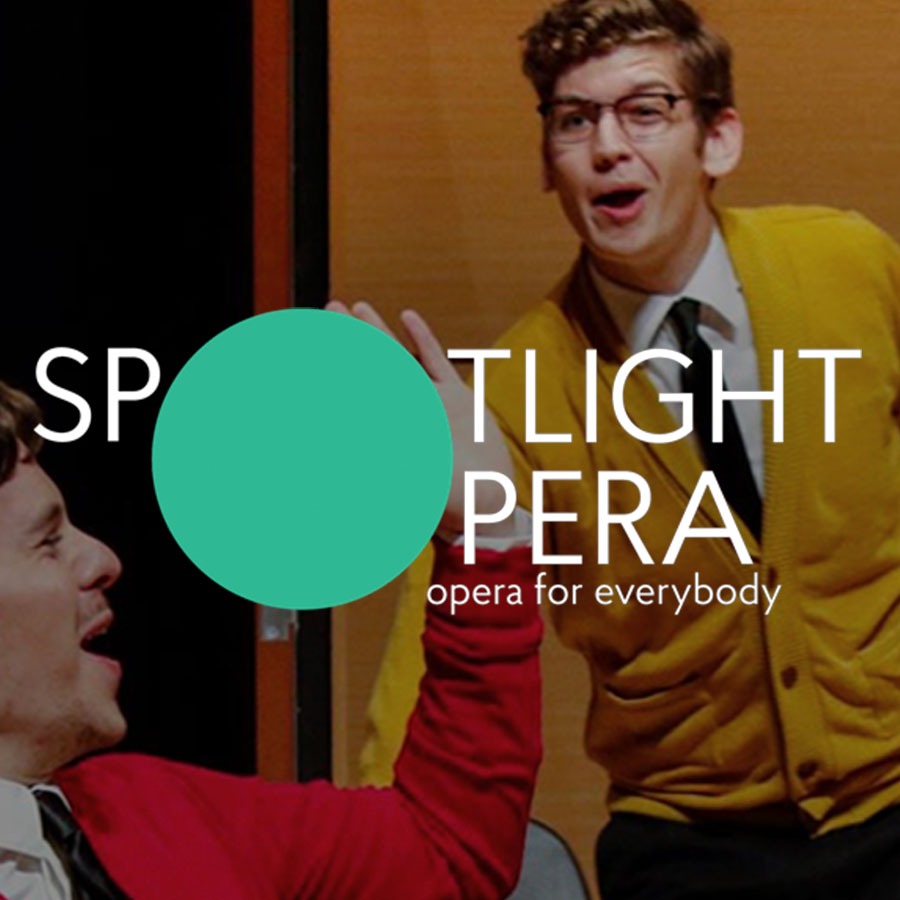What is opera like for a listener - and singer - with limited vision?
By Emily Michael
It's February 8, 2014. As my friend and I find seats in the crowded theater, a stranger greets us in passing: "It's so nice to see young people at the opera." I am 26, seated beside my 25-year-old companion — two dark brown heads in what the woman calls "a sea of white." While we occupy the least expensive seats toward the back of the theatre, silver and white-haired opera-goers fill the premium seating of the first dozen rows.
Tonight's production, Mozart's La Nozze di Figaro, will be performed by the Jacksonville Symphony Orchestra and guest vocalists. As a singer with low vision, I am excited for this musical experience.
During the overture, I prepare myself for the perceptual challenges of this performance. Though I can see bright blurs moving across the stage, I cannot visually distinguish characters, scenery, or costumes. And I certainly can't read the English subtitles, projected on an oblong screen above the stage. I've reviewed plot summaries online, but I doubt I'll be able to follow this complicated story. I've attended several operas — La Boheme, Carmen, Dido and Aeneas — and each time, I enjoyed the music but I couldn't independently follow the plot. Even operas with English text use a repertoire of nonverbal messages, and these are lost on me.
So I've decided to face Mozart with different expectations. I don't expect to follow the storyline. I won't be able to judge Susanna's costume — or the visual absurdity of Cherubino dressed as a girl. Still, I don't intend to experience four hours of opera with the idea that I'm missing something. I only have access to the characters' voices, so I will focus on how well each voice suits its character. I will listen for how the voices tell the story.
When I listen to musicians perform, I often forget that they have bodies. I hear the green woody timbre of a cello, and I concentrate on the sound. I don't think of the arms, the hands, the breath that brings the notes into existence. I understand that the sounds originate onstage, but I neglect the bodies that help to create them. So when I hear Count Almaviva's booming baritone, the voice of Troy Cook, I forget that he is a man whose physique and attire I cannot identify. To me, he is only a voice — robust and exuberant — moving swiftly around the stage. The Count creates his character through the surety of his notes, the effortless confidence of his crescendos.
As I listen, other characters emerge. I can guess the voice of Susanna (Stacey Tappan), the lightest and sweetest of the cast. The Countess (Barbara Shirvis) wields a more womanly timbre — richer and fuller than Susanna's. Though Susanna and the Countess travel through complicated passages with bell-like crispness, the most interesting female voice onstage belongs to Marcellina, sung by Cindy Sadler. Marcellina's voice, like her character, is aged — sturdy but not smooth. While the melodies of Susanna and the Countess emphasize grace and agility, Marcellina's passages display passion and strength.
When Marcellina begins to sing, I recognize her voice immediately. By Act II, she has become an old friend whose identity I can place after two syllables. Her voice breaks through my indifference to this convoluted plot: she forces me to care about this story. And as the most distinctive voice onstage, Marcellina — a minor character — narrates the opera for me.
Whether listening or performing, I feel overwhelmed by the idea of visual characterization. Conductors emphasize the importance of hand gestures and facial expressions to enhance the storytelling power of music, but this demand for body language takes my concentration from the music itself. Because I rely on verbal communication in daily life, choreographed body language feels like a foreign vocabulary. When I sing, I use gestures to enhance the sound I produce, not the way I look. I worry that my nonvisual approach will limit how others hear and understand my performance. I wonder whether my voice alone can keep my audience's attention.
Sadler's voice, as Marcellina, achieves what I strive for as a singer: a full story in sound. For me, her character does not rely on gestures or costumes; instead, she employs melody as a storytelling force. Her precision and warmth underscore the sense that music creates its own narratives.
Emily Michael is a writer, musician, and English instructor living in Jacksonville, Florida. When she's not involved in academic pursuits, she works with blind and visually impaired people and their families, teaching self-advocacy and independent living skills.





